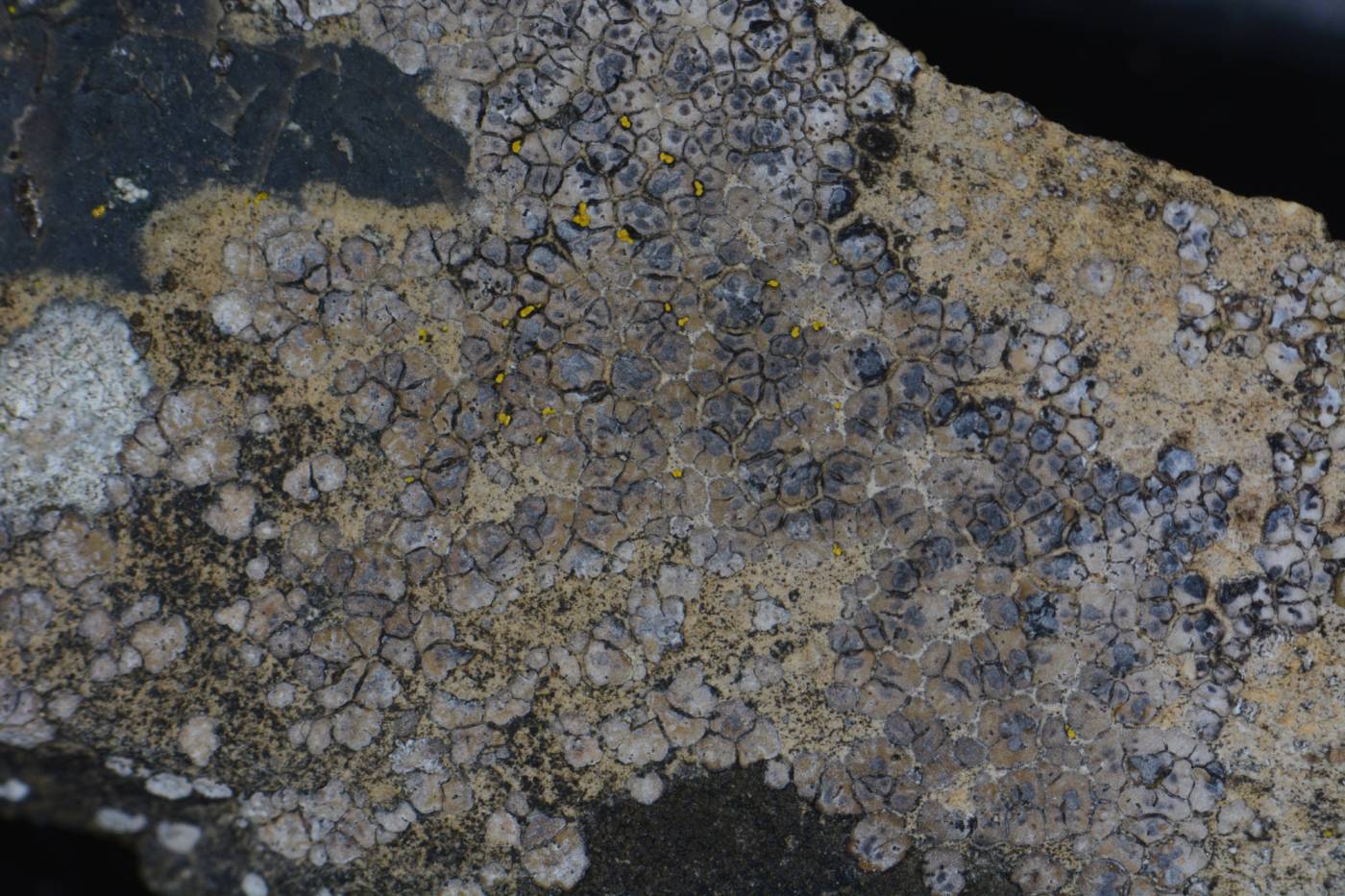This species is collected at lower elevations on granite, schist, sandstone, volcanic and iron-rich rock, rarely calcareous rock, sometimes on lime-encrusted siliceous rock. It is mainly a Mediterranean-Atlantic species, rare in central Europe as well as in the Czech Republic. Most of recent localities are reported from Central Bohemia.
It can be confused with pruinose specimens of A. fuscata. Like the fulvoviridula form of Myriospora scabrida, specimens of A. fuscata can become pruinose from flooding when siliceous and calcareous rock interface. The young areoles of A. umbilicata look like A. versicolor but differ in producing gyrophoric acid. Like A. versicolor, the amount of pruina varies with even some areoles being epruinose. Mature specimens can become lobulate, gomphate or squamulose, stipitate and loosely attached to substrate. This is forma congrediens, also known from the Czech Republic.
taxonomic classification:Ascomycota → Lecanoromycetes → Acarosporales → Acarosporaceae → Acarospora
Red List (Liška & Palice 2010):NT – near threatened
Red List (Malíček 2023):C3 – endangered
Occurrence in the Czech Republic
All records: 30, confirmed 30. One click on a selected square displays particular record(s), including their source(s).

